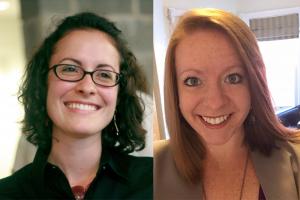Arhu Phd Candidates Receive 2017 Big 10 Academic Alliance/Smithsonian Institution Fellowships
May 23, 2017

Fellowships support research in cooperation with Smithsonian facilities and experts.
Danielle O'Steen, art history and archaeology Ph.D. candidate, and Rachel Walker, history Ph.D. candidate, are among the four University of Maryland graduate students awarded a Big 10 Academic Alliance/Smithsonian Institution Fellowship for 2017.
These one-year fellowships are offered by the Graduate Deans of the Big 10 Academic Alliance in partnership with the Smithsonian’s Office of Fellowships and Internships. The awards support outstanding doctoral candidates from Big 10 institutions who intend to conduct research using Smithsonian collections, facilities or experts in cooperation with at least one Smithsonian advisor.
Danielle O'Steen is currently writing her dissertation on the use of plastics in American sculpture in the 1960s and 1970s. For her fellowship, she will be in residence at the Smithsonian American Art Museum but will collaborate with researchers across the Smithsonian, including people in the Air and Space Museum.
“I’m an art historian, but my research is at the intersection of technological and cultural histories,” O’Steen says. “The Smithsonian is one of the few places where I can work with researchers who have a strong knowledge of both American art history and the history of plastics.”
Rachel Walker’s research is an interdisciplinary exploration of beauty, science and social hierarchy in early America. It focuses on physiognomy, the once-popular pseudoscience of determining character through facial features. Physiognomy was often used to justify slavery and perpetuate gender inequality. Walker will be in residence at the Smithsonian American Art Museum during her fellowship to study how eighteenth and nineteenth-century American portrait artists used physiognomy to inform their work.
“Scientific knowledge was an essential part of creating and enjoying art in the nineteenth century,” Walker says. “By studying the portraits and archives of these artists who incorporated physiognomy into their work, I hope to learn more about how discourses of art, science, race and gender intersected in early America.”
Only twenty five awards were made, and UMD had more fellows this year than any other institution. The other two awardees from UMD were Leann Biancani, biological sciences Ph.D. student, and Miriam Hiebert, materials science and engineering Ph.D. student.

